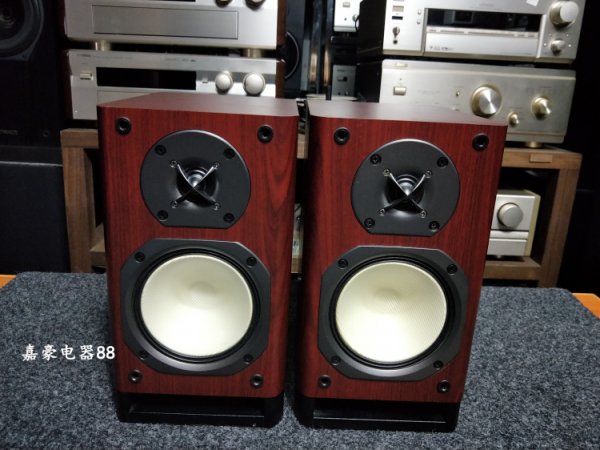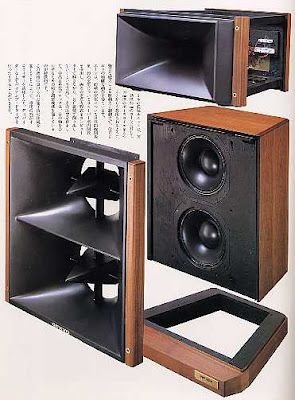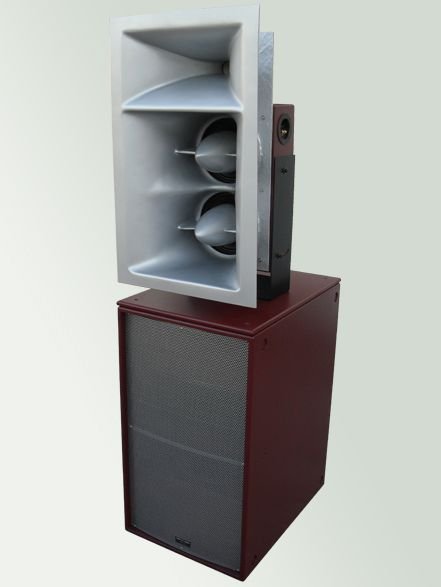Very interesting! I had never seen anything quite like it before, the closest being the "vanes" in something like the TAD TH-4001, which (if I understand correctly) are there to manage the horn's cross-sectional area so that the expansion rate is exponential. But maybe they do other things (such as help with high frequency dispersion) as well.
My impression of Bill Woods, horn designer for Oswalds Mill, is that he's a very smart guy with a lot of tricks up his sleeve. I bet he has found work-arounds for any audibly significant issues, and I bet that little speaker sounds magnificent.
But he's not the ONLY guy doing a small speaker with a round (though not "conical") wooden horn!
Here's a 4 way 70's studio speaker with phase plugs on the woofers, they used them on woofers for a couple reasons I believe in this case it was to minimize higher frequency interference when the drivers are close as is the listening distance.
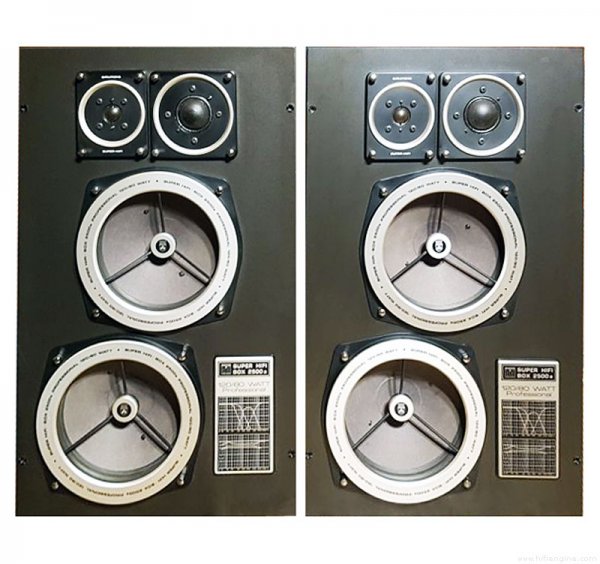
There are also dome type plug/lens that were common place in home audio.
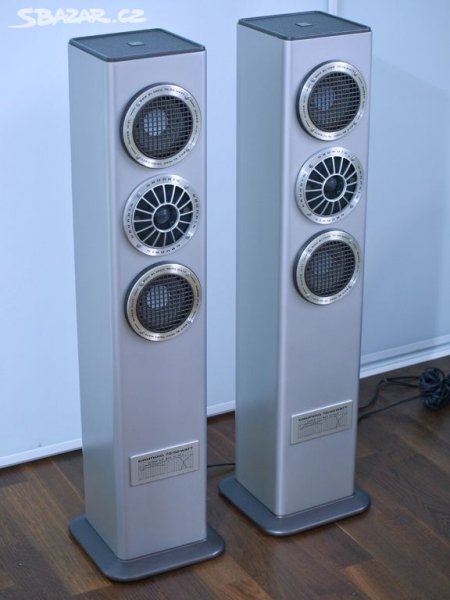
and lets not forget good old pa speakers with phase plugs
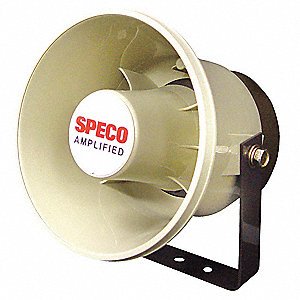
david


